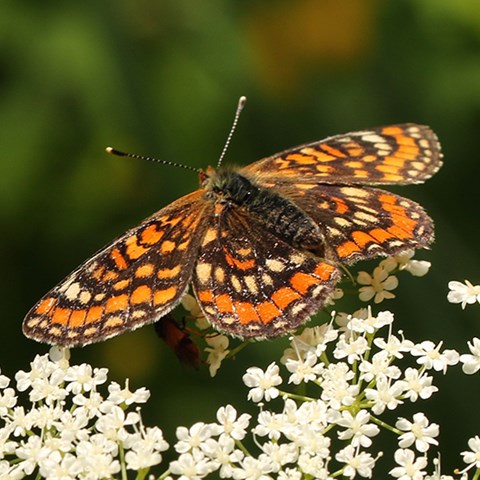Contact
Åke Berg professor
Swedish Biodiversity Centre, SLU
ake.berg@slu.se, +46 (0)18-67 26 24
Department of Ecology, S, Conservation Biology Unit
Michal Zmihorski, postdoc
Department of Ecology, SLU
michal.zmihorski@slu.se

A study from SLU and Linköping University show that powerline corridors should be more in focus in butterfly conservation. Powerline corridors are species-rich and seem to act as source habitats for butterflies in adjacent forest roads and pastures.
Landscape changes caused by modern intensified agriculture have had strong negative effects on farmland biodiversity. At the same time, development of infrastructure has created large areas of new potential but often neglected environments for open habitat species in forest-farmland mosaic landscapes, for example powerline corridors.
The researchers studied areas close to Linköping, Örebro, Uppsala and Norrtälje in south-central Sweden. They found that power line corridors were rich on butterflies and also had a positive effect of the number of butterfly species in pastures and forest roads nearby.
The management of powerline corridors is thus important for threatened butterflies, but further studies are needed to identify the optimal management. For example to introduce shorter intervals than 6–8 years between clearing of shrubs could have a positive effect. Other measures are to promote butterflies through grazing of pastures and clearing of shrubs in road verges, at a time and with an intensity that favour flowering plants and butterflies.
Åke Berg professor
Swedish Biodiversity Centre, SLU
ake.berg@slu.se, +46 (0)18-67 26 24
Michal Zmihorski, postdoc
Department of Ecology, SLU
michal.zmihorski@slu.se